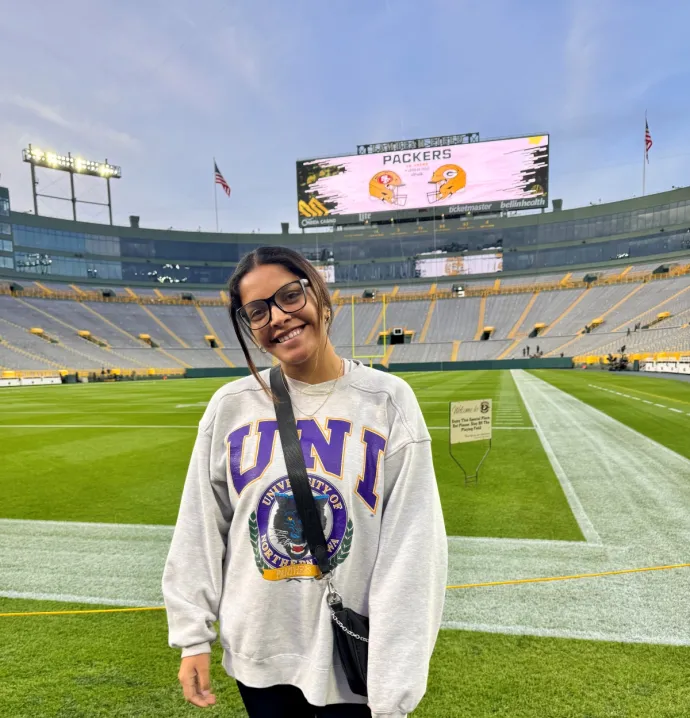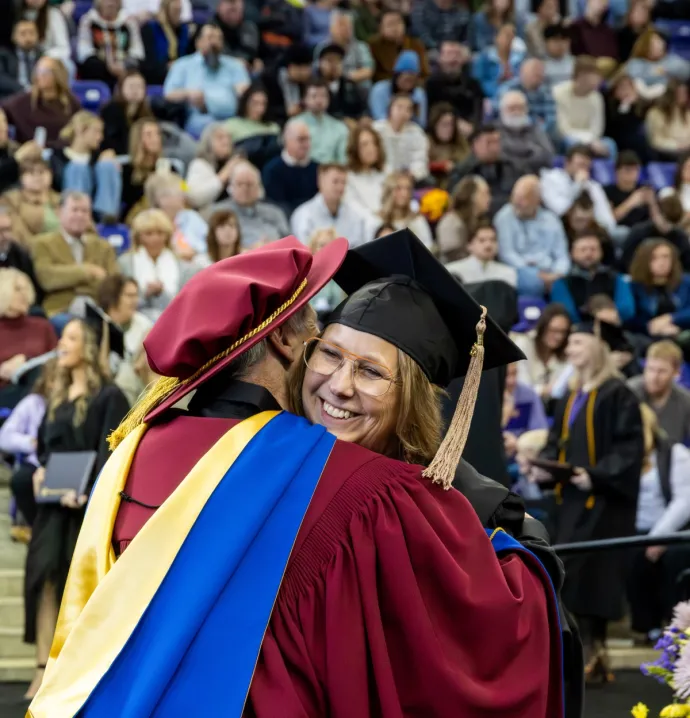Get ready for the new normal
Get ready for the new normal
With each passing day, we are one day closer to bringing students back to the UNI campus. If we learned anything from the sudden transition to the online environment in March, it is that we sincerely miss our daily interactions with students. According to multiple surveys from our students, they miss their time on campus. We are very excited to have them return.
But we have to recognize the uncertainty and anxiety that continues to surround us. We are all preparing for fall and will be ready for fall no matter the situation. That is an ongoing and heavy lift. Here are a few of the ways we are preparing to resume campus life.
Health & Safety
While information about this new virus changes daily, we do know that face coverings, social distancing and personal hand hygiene are the primary tools for decreasing the transfer of the virus. All facilities are being reviewed to implement social distancing. We are adjusting HVAC systems to bring in more outside air and use higher-level filtering systems. Faculty, staff and students are required to wear face coverings in all UNI buildings, including classrooms. An inconvenience, yes, but the best method to control the spread until a vaccine is available. Our health and safety plans include strategically placed hand sanitizers and plenty of soap in the restrooms.
Business faculty and staff had the opportunity to have their questions answered by a local medical professional on the front lines diagnosing and treating COVID-19 patients in a clinical setting. It was comforting to learn that despite the daily close contact the providers have had with COVID-19 patients over the past three months, there has been no spread of the virus among their providers or non-COVID-19 patient populations. Yes, they are using the same three strategies – face coverings, social distancing, and personal hand hygiene.
Decreased classroom capacity
We reduced seating capacity in classrooms to 40% of normal capacity– an onerous job given the size of our business classes. It will be impossible to avoid moving some classes online but our goal is to deliver at least 80% of our sections face-to-face (F2F).
In the business college, very few courses are moving online, although we will teach fewer courses in Curris. Before the adjustment, 8% of our sections were online. After the adjustment, 14%. Even large sections will be able to maintain a F2F component as faculty adopt a hybrid model.
What is a hybrid course?
A hybrid course can take a variety of forms. One example could be a Monday-Wednesday-Friday course divided into three sections, each section meeting F2F one day per week. Lectures can be viewed by students online at their convenience. F2F class time is reserved for working through problems, case discussions and answering questions. Our faculty bring tremendous value to the classroom through the unique materials developed and the learning experiences created for students. Most faculty would agree that the most value-added elements for learning are the engagement opportunities UNI students expect from our faculty. For students not in the F2F class at that time, group work via Zoom might be required or individual work to be done and submitted during that hour.
Strategic decisions when determining which classes would move online.
The business college leadership team took a strategic approach to determine which classes would be moved online. Student success was our primary driver. How do we support students in a wide variety of situations while meeting our promise to deliver a high-quality, high-engagement curriculum? That required answering two primary questions:
How do we serve students who may not be able to physically return to campus?
Every business core course has at least one online section scheduled for fall. Faculty assigned to these sections are committed to providing an outstanding educational experience in the virtual environment. While we cannot guarantee that every major is available online, we have committed to ensuring that students can fully complete a Management Business Administration major online beginning this fall. We continue to evaluate how to serve students who cannot return to campus as new situations arise.
How do we translate our teaching approaches, given our health and safety protocols?
In some cases, moving a course online was done to ensure that the faculty member could interact with students while practicing social distancing. For example, most sections of a sophomore-level information systems course were moved online because social distancing would not allow a faculty member to walk around the room and help students with whatever problem they are having with the software. Instead, through technology, students can share their screens and the faculty member can coach them through their issue.
Sometimes the need to wear face coverings can complicate a course. Can you imagine practicing your negotiation skills while both parties are wearing a face covering? Again, technology allows a faculty member to keep the most effective teaching methods in place.
Provided extensive training on a wide variety of technology tools
Moving all of our spring classes online with a week’s notice was a heavy lift for faculty. Some were more prepared than others. Multiple workshops were provided by the University that included information about universal design, online tools, library resources, lessons learned and other aspects of teaching effectiveness in this challenging time. These resources will help faculty prepare for fall and continue to be available throughout the year.
Contingency Planning
We are confident in the measures put in place to mitigate the spread of the virus, but it is likely we will need to continue making adjustments as the semester progresses. Faculty have a heavy workload preparing for the wide range of possibilities. With most of our classes designed to be F2F, those faculty members will need to be prepared to move online should our environmental conditions dictate. But contingency planning goes beyond that. What if some students in the class must be quarantined? We must ensure those students can continue their education. What if a student contracts COVID-19 and is too sick to complete assignments? We must help them catch up when they return. What if the faculty member must be quarantined? What if the faculty member is too sick to teach? These are situations we have addressed before, most recently with the Swine Flu outbreak, but not to the extent that we will rely on them next academic year
The success of these actions will greatly depend upon the extent to which our Panther family accepts the personal responsibility for implementing three strategies – face coverings, social distancing and personal hand hygiene in all aspects of their life, on and off-campus.
We are and will forever be #UNIforwardtogether.




